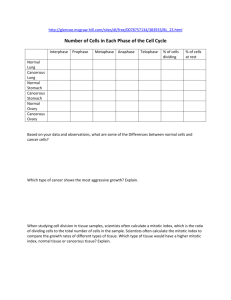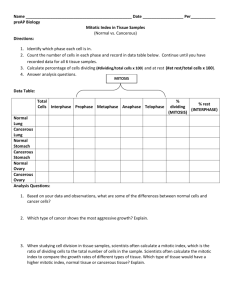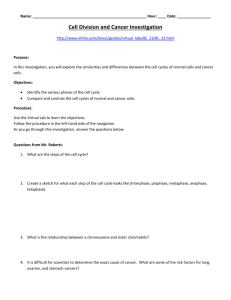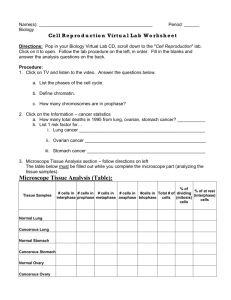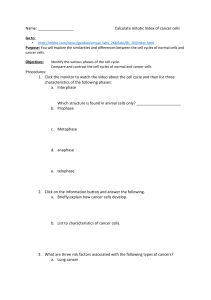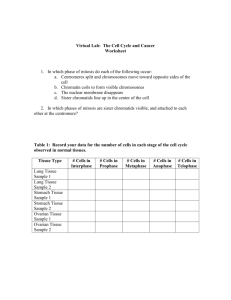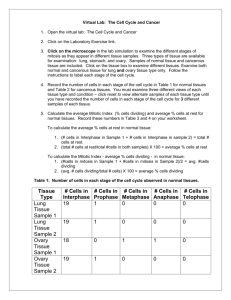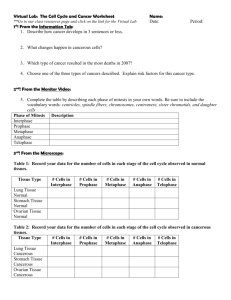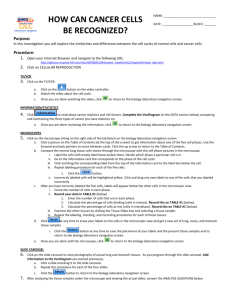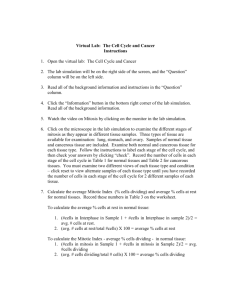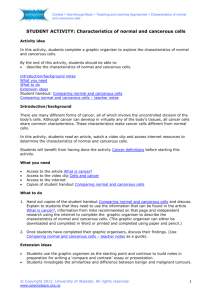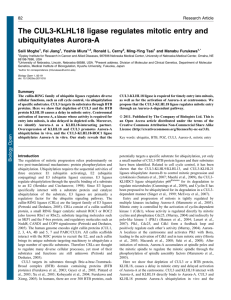The Cell Cycle and Cancer Virtual Lab
advertisement
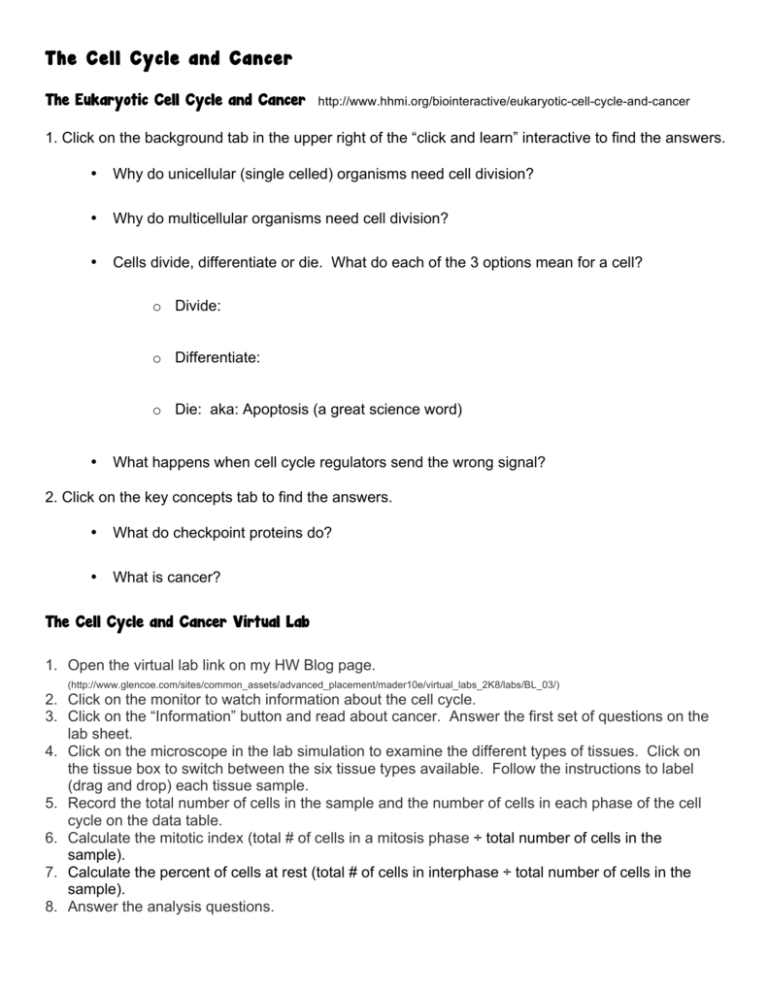
The Cell Cycle and Cancer The Eukaryotic Cell Cycle and Cancer http://www.hhmi.org/biointeractive/eukaryotic-cell-cycle-and-cancer 1. Click on the background tab in the upper right of the “click and learn” interactive to find the answers. • Why do unicellular (single celled) organisms need cell division? • Why do multicellular organisms need cell division? • Cells divide, differentiate or die. What do each of the 3 options mean for a cell? o Divide: o Differentiate: o Die: aka: Apoptosis (a great science word) • What happens when cell cycle regulators send the wrong signal? 2. Click on the key concepts tab to find the answers. • What do checkpoint proteins do? • What is cancer? The Cell Cycle and Cancer Virtual Lab 1. Open the virtual lab link on my HW Blog page. (http://www.glencoe.com/sites/common_assets/advanced_placement/mader10e/virtual_labs_2K8/labs/BL_03/) 2. Click on the monitor to watch information about the cell cycle. 3. Click on the “Information” button and read about cancer. Answer the first set of questions on the lab sheet. 4. Click on the microscope in the lab simulation to examine the different types of tissues. Click on the tissue box to switch between the six tissue types available. Follow the instructions to label (drag and drop) each tissue sample. 5. Record the total number of cells in the sample and the number of cells in each phase of the cell cycle on the data table. 6. Calculate the mitotic index (total # of cells in a mitosis phase ÷ total number of cells in the sample). 7. Calculate the percent of cells at rest (total # of cells in interphase ÷ total number of cells in the sample). 8. Answer the analysis questions. Background Information: How Does Cancer Develop? (pages 1 &2) 1. Cancer develops when ________________________________________________________. 2. Things that can cause a cell to no longer regulate its cell cycle properly include • Too many ________________ _____________ that encourage a cell to divide. • A __________________________ of genes that make proteins that regulate the cell cycle. • A mutation in ______________________ __________________ genes that destroy cancerous cells. What Changes Happen in Cancerous Cells? (page 3) 3. Some unique characteristics of cancer cells that are not seen in normal, healthy cells include: • _________________________ of the cancer cells such that they don’t ____________. • A lack of contact ____________________________. The cells continue to divide, even when they are ___________________________________________________________. • Reversion on an __________________________ form so they no longer perform their intended function. How Can Cancer Cells be Recognized?(pages 4-9) 4. Some risk factors for lung cancer are: • • • 5. Some risk factors for stomach cancer are: • • • 6. Some risk factors for ovarian cancer are: • • • Data: Tissue Sample Total Cells Interphase P M A T Mitotic Index % at Rest Normal Lung Cancerous Lung Normal Stomach Cancerous Stomach Normal Ovary Cancerous Ovary Analysis Questions: 1. Based on your data and observations, what are some of the differences between normal cells and cancer cells? 2. When studying cell division in tissue samples, scientists often calculate a mitotic index, which is the ratio of dividing cells to the total number of cells in the sample. Which type of tissue would have a higher mitotic index, normal tissue or cancerous tissue? Explain. 3. Different types of normal tissues in the human body have different mitotic indices. From the following list, which normal tissues would you expect to have the highest mitotic index: muscle, skin, kidney, or lung? Explain your answer. CLEAR Use the data and information from the virtual lab to write a CLEAR.
